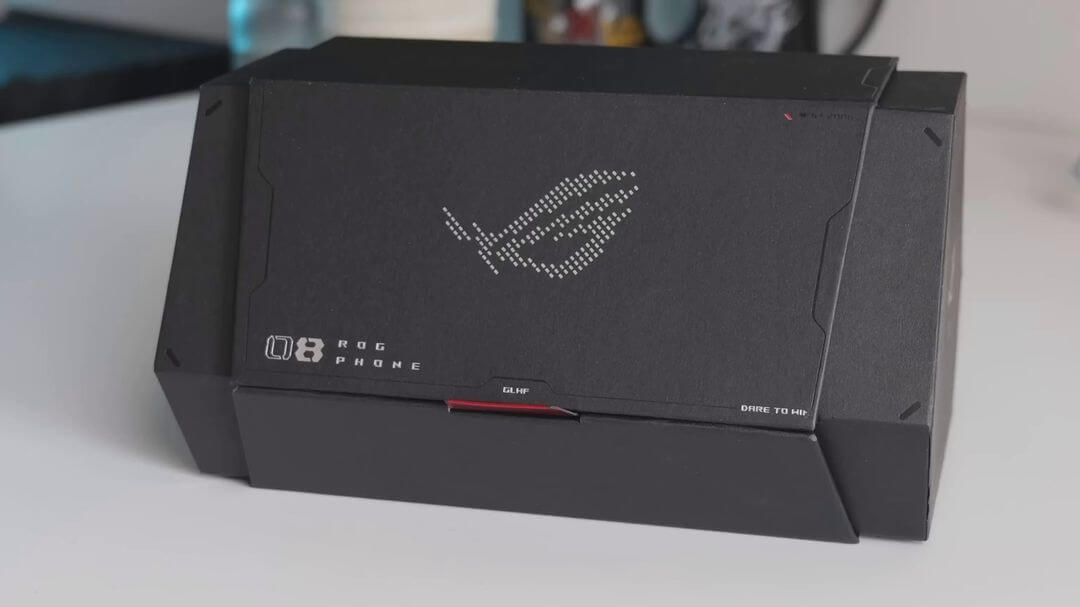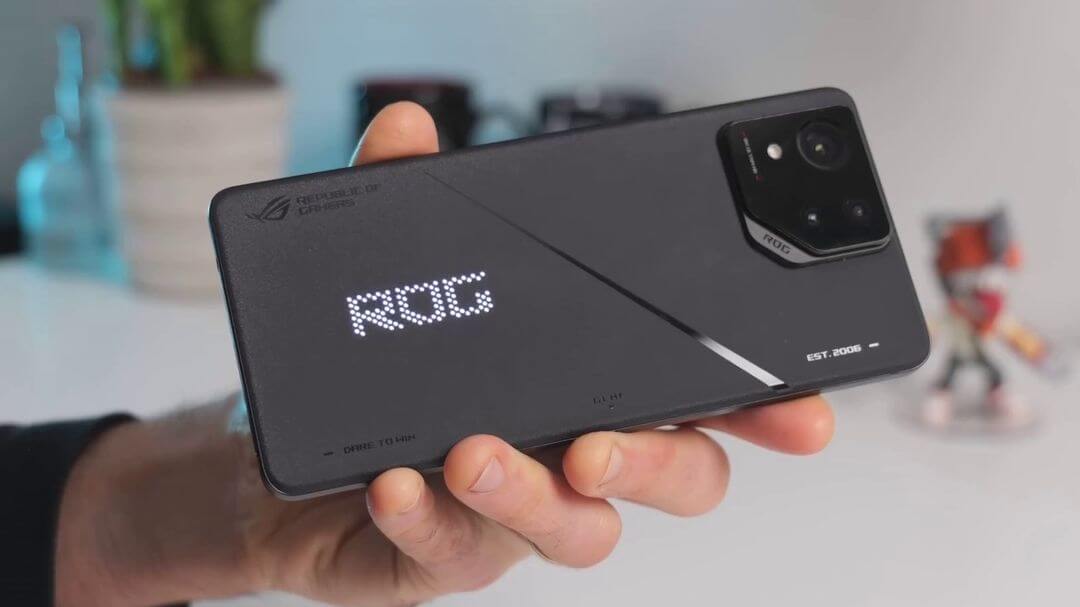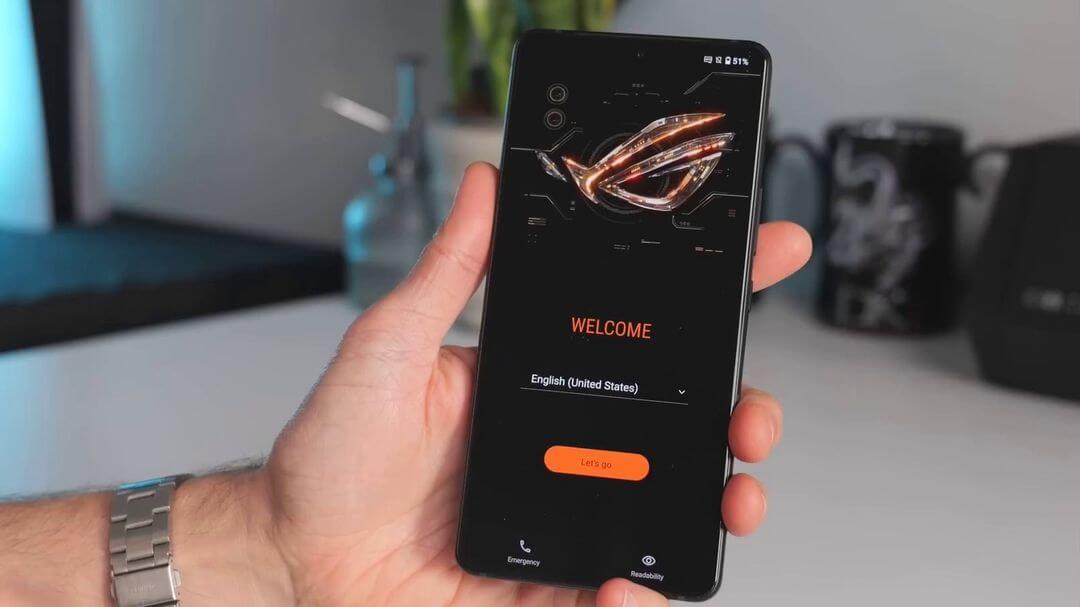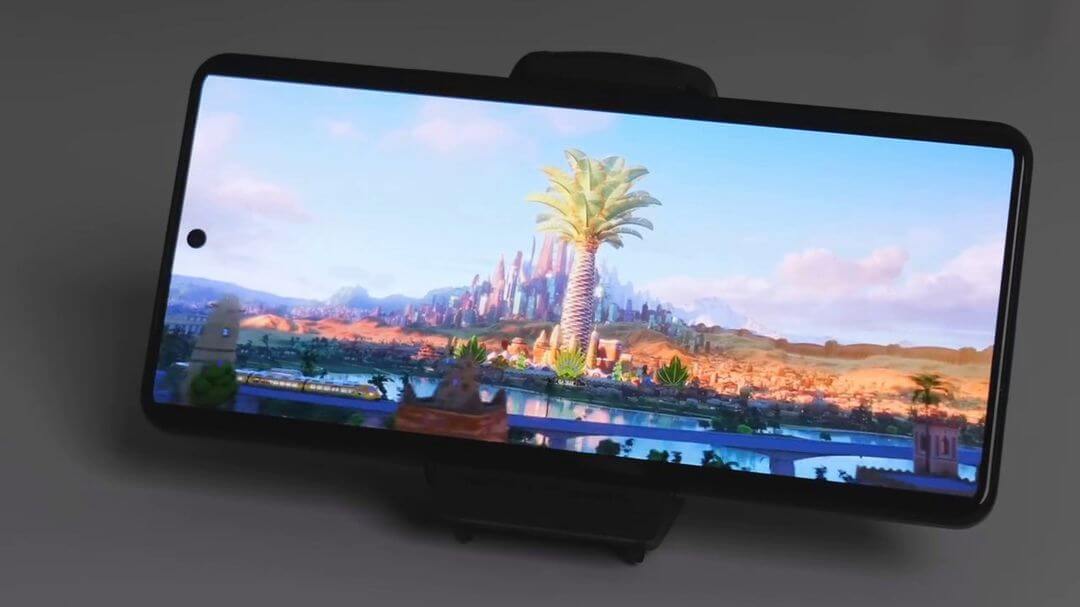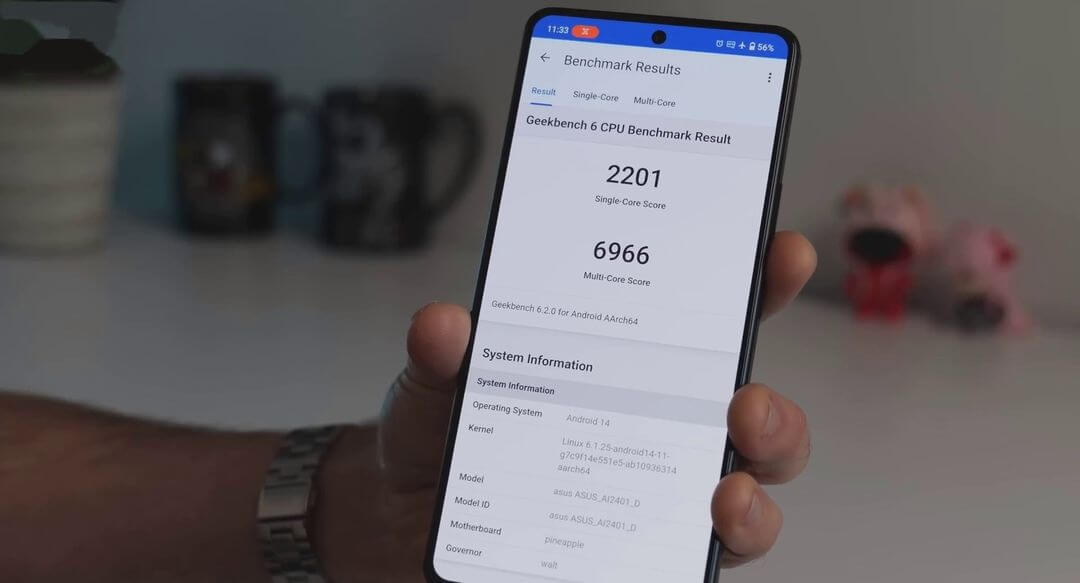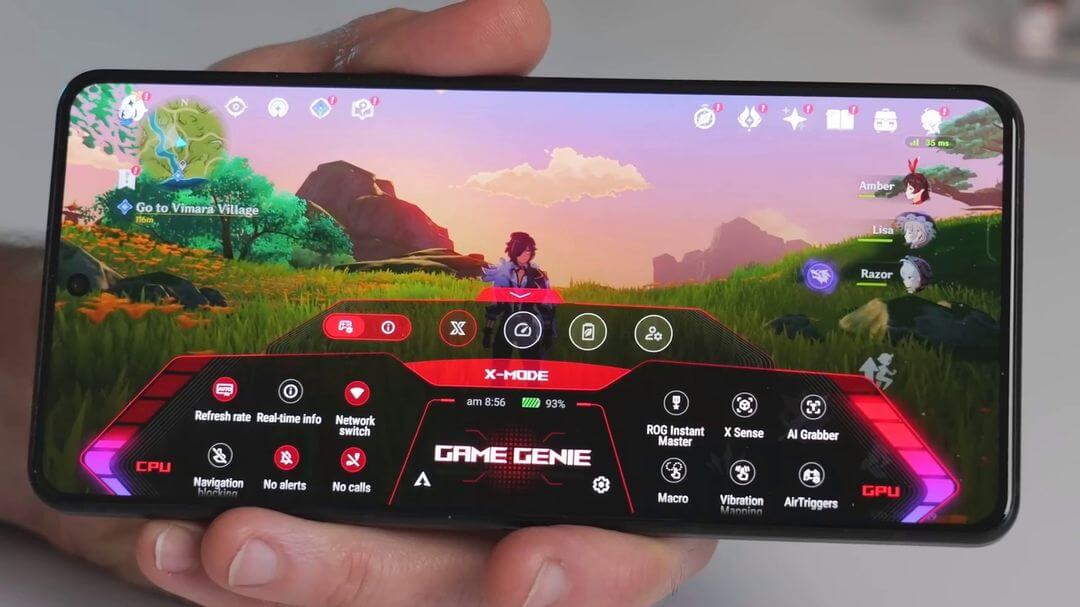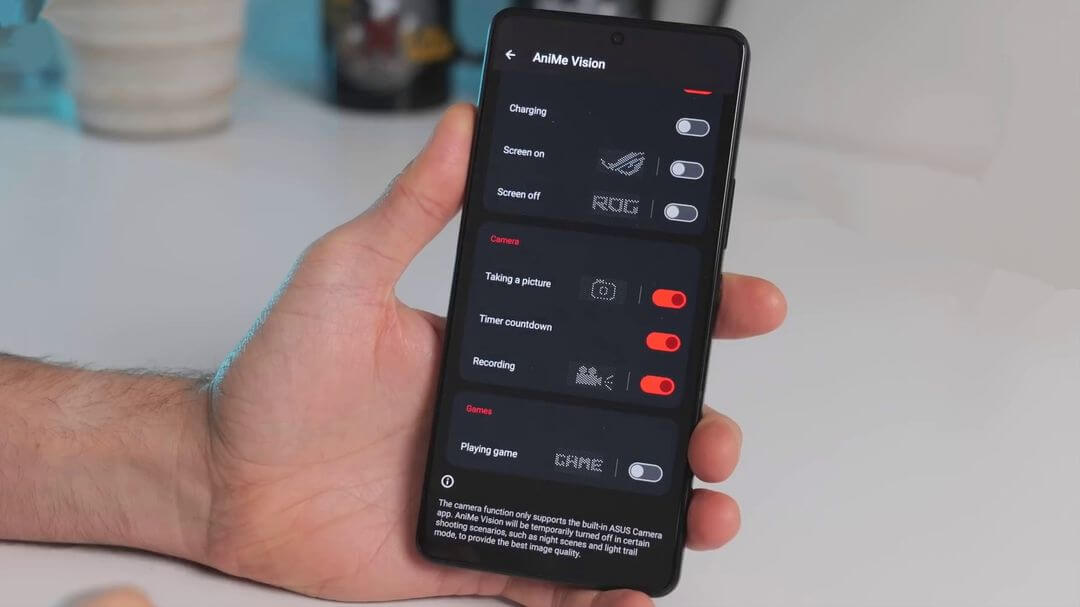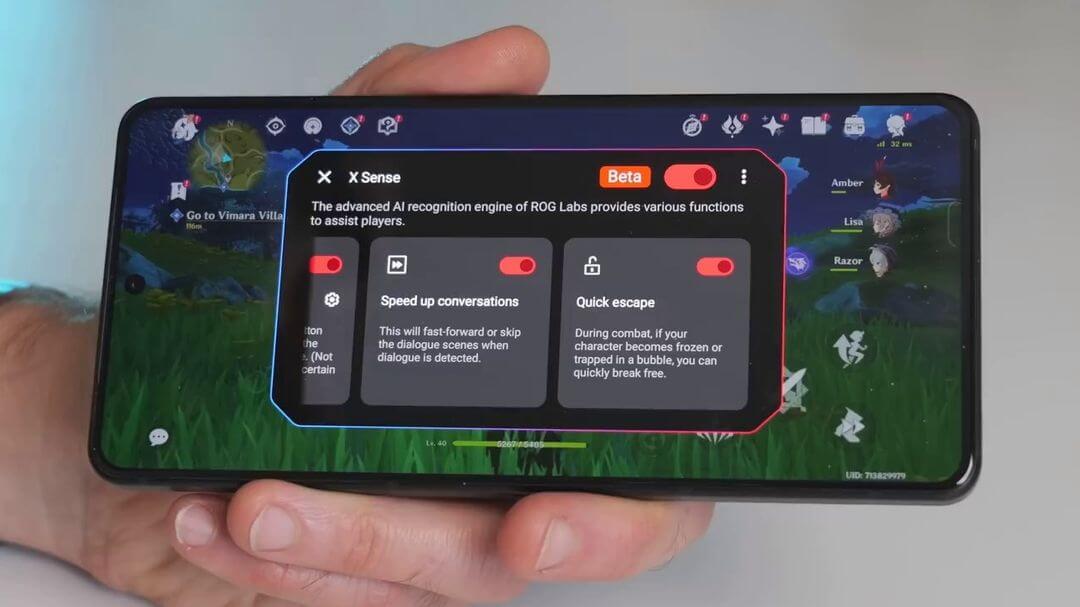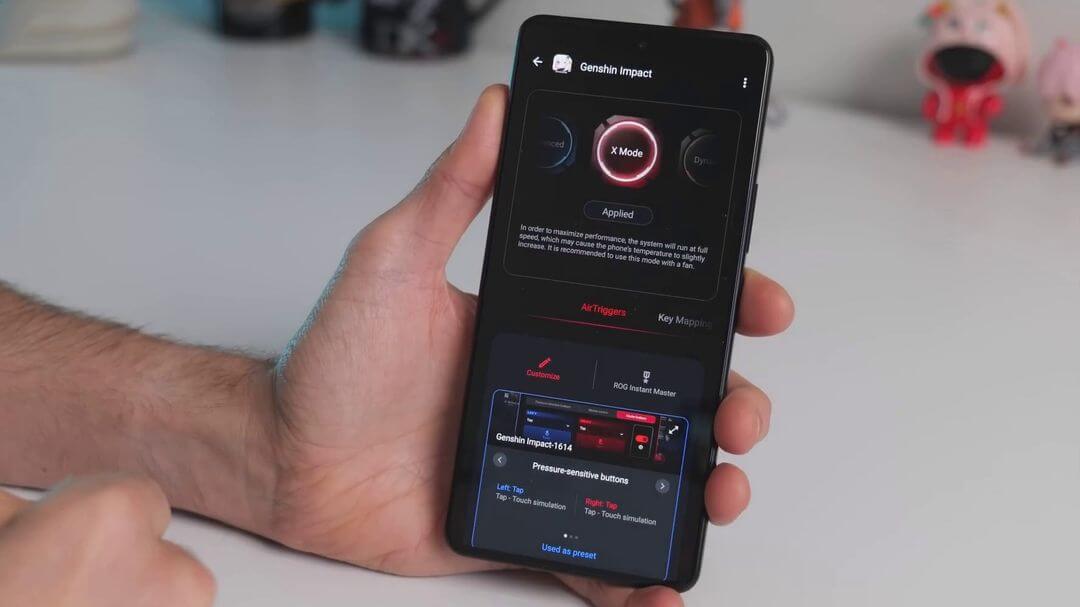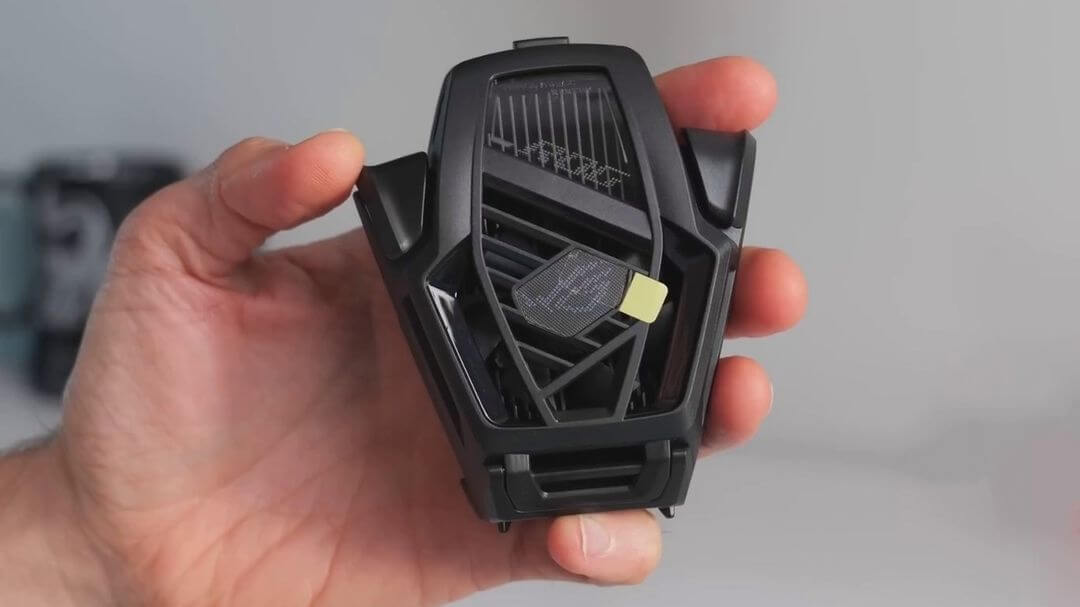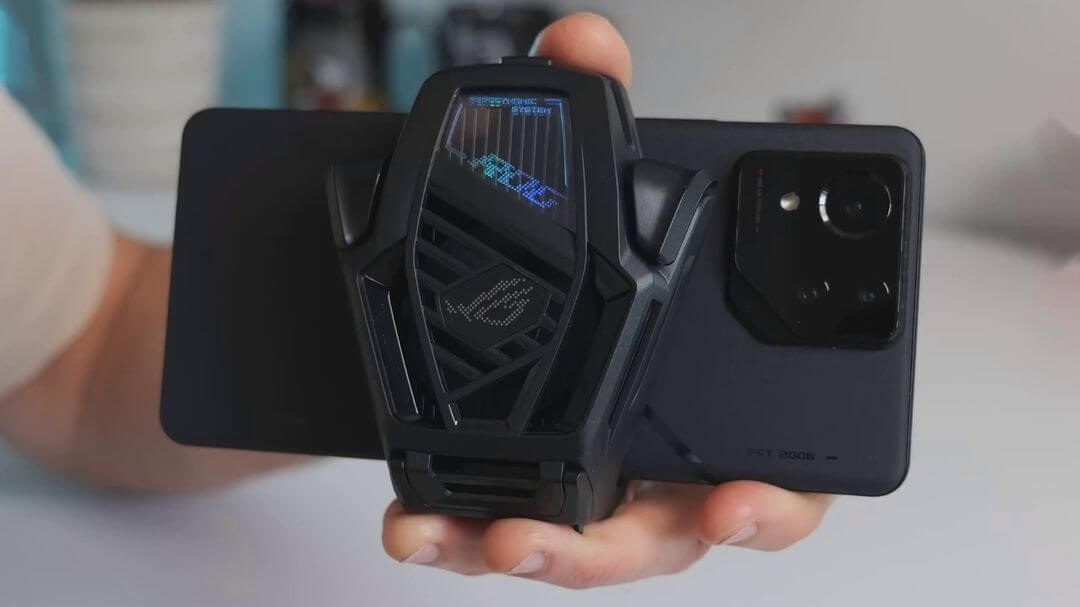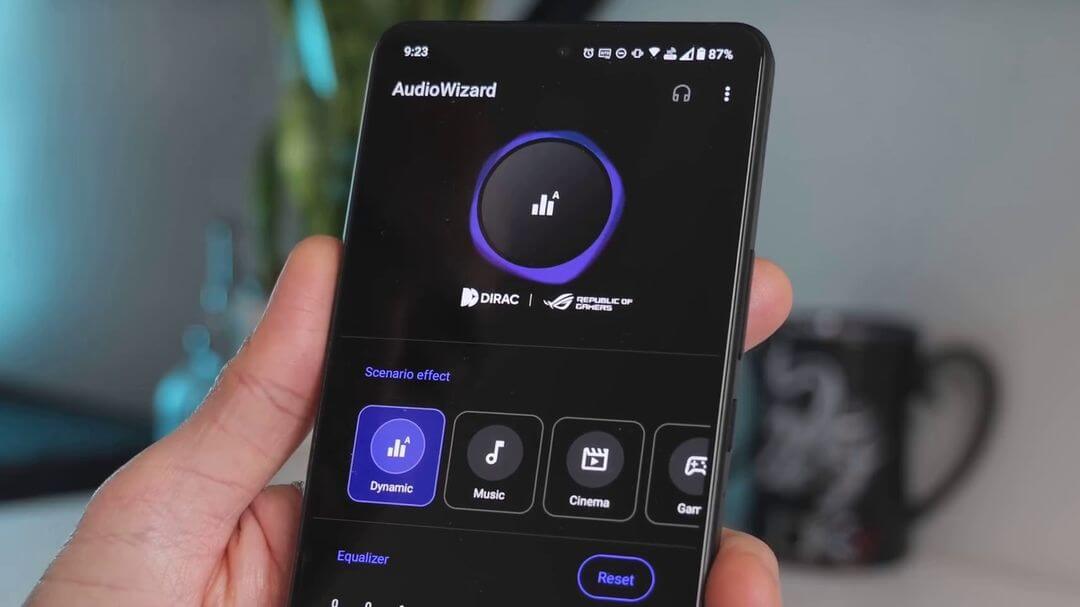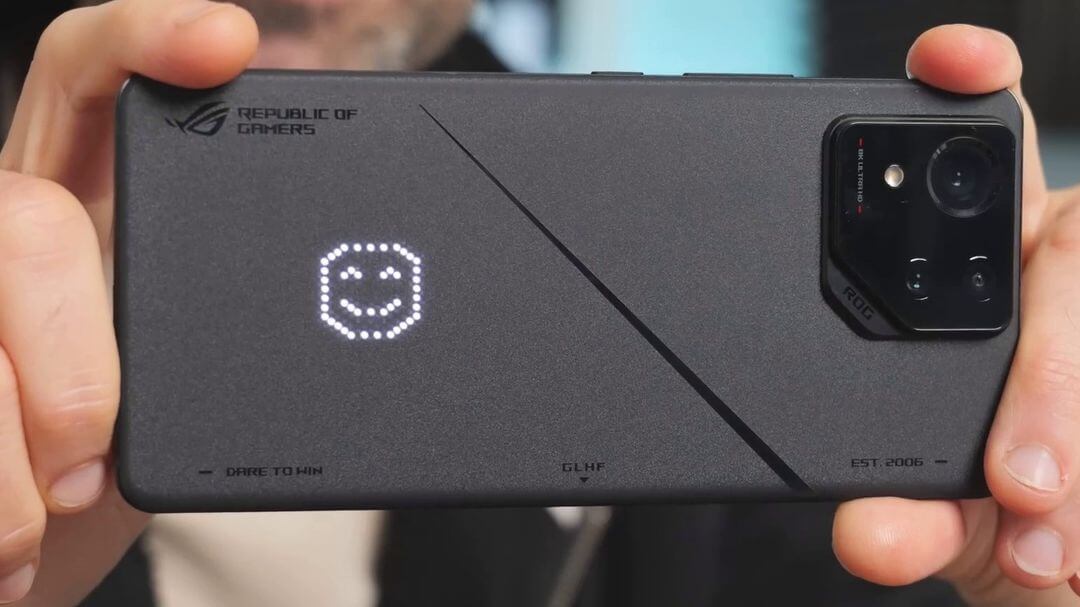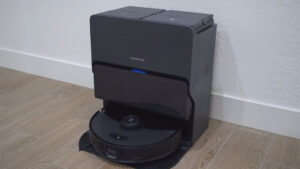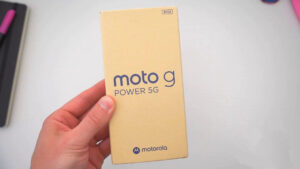Asus ROG Phone 8 Pro Review: Great performance, but poor battery life!
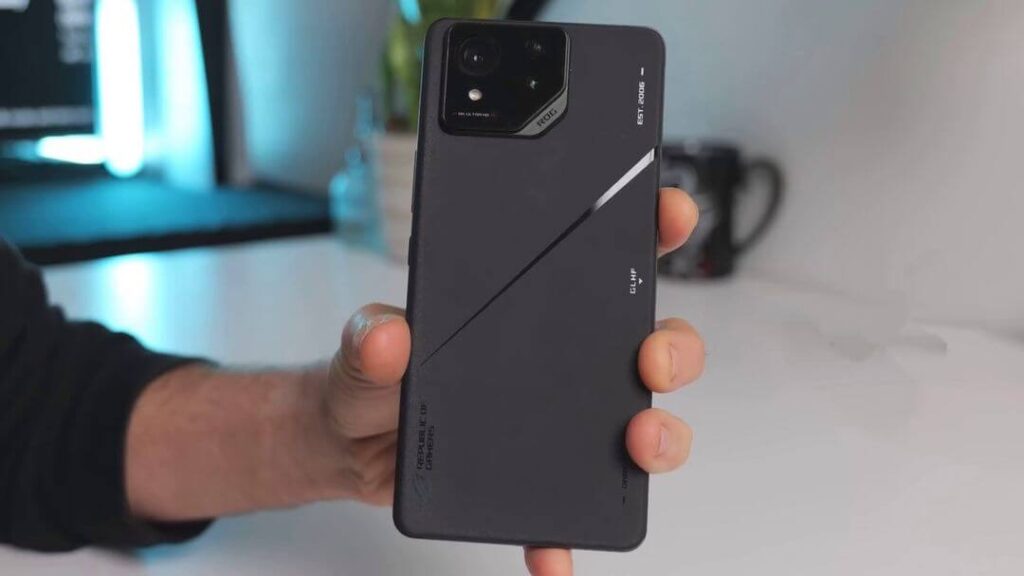
In the ever-evolving realm of gaming smartphones, Asus continues to dominate with its latest flagship, the Asus ROG Phone 8 Pro. Following a year after the release of the ROG Phone 7 Ultimate, this Taiwanese giant has returned with the sixth generation of high-end phones dedicated to video games, introducing a fresh perspective on design and a much-anticipated foray into the field of photography.
Asus ROG Phone 8 Pro: Video Review
| Specs | Asus ROG Phone 8 Pro |
| Display | 6.78 inches, LTPO AMOLED, 165Hz, 1080 x 24000 pixels, HDR10, 1600 nits (HBM), 2500 nits (peak) |
| CPU | Qualcomm SM8650-AB Snapdragon 8 Gen 3 (4 nm) |
| GPU | Adreno 750 |
| Memory | 512GB 16GB RAM, 1TB 24GB RAM |
| Memory Card slot | No |
| Sensors | Fingerprint (under display, optical), accelerometer, gyro, proximity, compass |
| Bluetooth | 5.3, A2DP, LE, aptX HD, aptX Adaptive, aptX Lossless |
| OS | Android 14 |
| Rear Camera | 50 MP, f/1.9, 24mm (wide), 32 MP, f/2.4, (telephoto), 13 MP, f/2.2, 120˚ (ultrawide) |
| Front Camera | 32 MP, f/2.5, 22mm (wide), 1/3.2", 0.7µm |
| SIM | Dual SIM (Nano-SIM, dual stand-by) |
| GPS | GPS (L1+L5), BDS (B1I+B1c+B2a), GALILEO (E1+E5a), QZSS (L1+L5), NavIC (L5), GLONASS |
| NFC | Yes |
| Battery | 5500 mAh, non-removable |
| Charging | 65W wired, 15W wireless (Qi), 10W reverse wired |
| Dimensions | 163.8 x 76.8 x 8.9 mm (6.45 x 3.02 x 0.35 in) |
| Weight | 225 g (7.94 oz) |
| Protection | IP68 dust/water resistant (up to 1.5m for 30 min) |
| Colors | Phantom Black |
Unboxing
Asus has always been known for its unconventional packaging, and the ROG Phone 8 doesn’t disappoint. The box itself is an object of fascination, emphasizing the premium nature of the device inside.
Upon opening, users are greeted not only by the smartphone but also by a high-powered 65W USB-C charger. Additionally, for those investing in the ROG Phone 8 Pro Edition boasting 24GB of RAM and 1TB of storage, there’s an added surprise – the AeroCooler X external fan. This cooling accessory aims to enhance the gaming experience by keeping the device at optimal temperatures during intense gaming sessions. For others, the AeroCooler X can be separately purchased for €79.99.
Asus ROG Phone 8 Pro: Design
In the realm of gaming smartphones, Asus is boldly stepping into new territory with the 2024 vintage, the ROG Phone 8 Pro. Embracing a mantra of “Beyond gaming,” Asus promises a device that transcends its gaming roots to offer a versatile and cutting-edge experience. This evolution is evident right from the design, breaking away from previous norms to align with contemporary trends.
The design of the ROG Phone 8 Pro smartphone is a departure from the past, reflecting a commitment to modern aesthetics. The edges, while not minimalist, exude a sense of sleekness with almost flat edges, reduced RGB lighting, and minimized screen borders. However, the design choice of a bulky camera unit raises concerns about ergonomic practicality, with one’s finger often resting on it during horizontal usage.
Presented in a unique matte black color (with a classic gray option for the standard model), the ROG Phone 8 Pro’s appearance is further accentuated by the brand’s illuminated RGB logo. For the Pro and Pro Edition models, a novel addition called AniMe Vision graces the back—a small MiniLED matrix displaying contextual icons based on the active application. While intriguing, its practicality seems limited, providing only a fleeting amusement out of the box.
Retaining a second USB-C port on the left edge ensures comfortable charging while playing in a horizontal position. The inclusion of a headphone jack is a rare but welcomed sight in a high-end mobile device. Additionally, the familiar AirTriggers tactile triggers make a return, maintaining their practicality for gaming enthusiasts.
Two standout features set the ROG Phone 8 apart from its predecessors and the competition. Firstly, these devices claim the title of being the world’s first gaming smartphones to achieve IP68 certification, making them resistant to immersion in fresh water to a certain extent. This is a commendable leap in durability for gaming devices. Secondly, the reintroduction of a notifications LED, albeit in a modified form using the LTPO screen, brings back a familiar yet evolved feature. A small dot permanently displayed when a notification is pending harks back to the era of traditional LEDs, providing users with a visual cue for alerts.
Display
In the pursuit of gaming excellence, Asus continues to redefine the boundaries of smartphone displays with the ROG Phone 8 Pro. The device not only boasts the largest display surface in the history of the ROG Phone series at a generous 6.78 inches but also introduces a groundbreaking level of brightness, setting a new standard for immersive gaming visuals.
Asus has gone above and beyond by adopting the brightest panel in the series, with a remarkable peak brightness of 2500 nits—an impressive leap from the 1000 nits of its predecessor, the 7 Ultimate. This luminosity not only ensures a visually stunning gaming experience but also addresses any concerns about outdoor readability, as users can navigate the display effortlessly in various lighting conditions.
The display of the ROG Phone 8 Pro dynamically adjusts its refresh rate, ranging from 1 to 120 Hz based on the content being viewed. For the most ardent gamers willing to sacrifice some battery life, the option to push the refresh rate to 165 Hz is available—a feature carried over from the previous model. This exceptional fluidity, combined with an unprecedented 720 Hz touch sampling rate, means that the screen analyzes movements an astounding 720 times per second.
While the display’s default white balance is adjustable, some users might find it a tad too cold. However, this minor quibble is overshadowed by the overall excellence in color reproduction. The ROG Phone 8 Pro ensures that every hue is vividly and accurately transcribed, doing justice to the wide array of content that users can enjoy on this cutting-edge display.
Asus ROG Phone 8 Pro: Performance
In the race for technological supremacy, the Asus ROG Phone 8 Pro stands as a trailblazer, being the first smartphone to feature the cutting-edge Snapdragon 8 Gen 3, Qualcomm’s latest chip that graced the mobile world in 2024.
Benchmark results tell a compelling story, showcasing the ROG Phone 8’s prowess. The device nearly doubles the scores of its predecessor and achieves a remarkable 2.2 million points on AnTuTu. Setting a new benchmark, it becomes the first smartphone to breach the 2000 points mark in single-core on Geekbench and achieves an impressive 7100 in multi-core performance. However, we note that our ROG Phone 8 Edition has the best with 24GB of RAM.
However, this stellar performance doesn’t come without a slight hiccup. The ROG Phone 8 Pro raised concerns during intense stress tests, notably during 3D Mark runs where temperatures soared. The device reached a staggering 60°C, prompting a momentary alarm. Fortunately, in real-world scenarios and even during demanding activities like gaming, the device managed to maintain its composure, assuring users that the high temperatures experienced during stress tests were an anomaly.
Powered by the Snapdragon 8 Gen 3, the ROG Phone 8 Pro emerges as the most efficient System-on-Chip (SoC) in the Android market. While the AI capabilities are touted as a standout feature, their impact on daily tasks may not be as perceptible to the average user. The benefits of the Neural Processing Unit (NPU) primarily contribute to the improved processing speed of routine tasks, subtly enhancing the overall user experience.
Asus ROG Phone 8 Pro: Software
In the ever-evolving world of gaming smartphones, Asus stands out once again by refining its ROG overlay on the ROG Phone 8 Pro, introducing a genuine control panel that empowers users to configure nearly every aspect of their device. The focal point of this customization experience is the Armory Crate, a comprehensive tool that goes beyond traditional performance profiles, allowing users to fine-tune the AniMe display, customize in-game shortcuts, and harness the full potential of features like AirTriggers and innovative gesture shortcuts.
A notable addition to the gaming overlay this year is the infusion of “AI” features, with the most prominent being X Sense. This cutting-edge technology takes inspiration from the Action Replay concept of yesteryears. X Sense, compatible with select titles including the likes of Genshin Impact, transforms the gaming experience by automatically collecting in-game objects as you approach them and accelerating dialogues. For dedicated gamers, this feature is a game-changer, streamlining repetitive tasks and enhancing overall efficiency.
The software features offered by the ROG Phone 8 Pro set it apart from other manufacturers in the market. Armory Crate provides a level of control and personalization rarely seen in mainstream smartphones, catering specifically to the needs and preferences of gaming enthusiasts.
However, beyond its gaming prowess, the ROG Phone 8 Pro is essentially a conventional smartphone. Running on Android 14 out of the box, Asus commits to providing at least two years of software upgrades.
Aero Active Cooler X external fan
In tandem with the revolutionary design of the ROG Phone 8 Pro, Asus introduces a revamped flagship accessory, the Aero Active Cooler X. It comes bundled with the ROG Phone 8 Pro Edition or is available separately for €79.99. This external fan enhances the gaming experience by increasing the device’s heat dissipation capabilities, specifically using boron nitride to improve thermal efficiency.
The Aero Active Cooler X, while more compact than its predecessor, boasts a 10% faster fan and a larger dissipation surface (36 x 38 mm).
Practicality meets functionality with additional features, including a tripod for convenient placement on surfaces—ideal for gaming with a controller. Two extra triggers enhance configurability, allowing users to personalize shortcuts to match their gaming preferences. However, the convenience aspect takes a hit as users might find it challenging for their fingers to navigate the fan’s shoulders, and the overall feel in hand is somewhat awkward, accentuated by a notable increase in weight. As the name suggests, it remains an accessory—an optional addition that might not resonate with the average user.
Sound
Despite the revamped design of the ROG Phone 8, Asus continues to prioritize an immersive audio experience, showing the prowess of the smartphone’s speakers. While the use of compact transducers may not capture every nuance of intricate compositions, the speakers impress with their raw power. The bass, in particular, stands out as both present and pleasing, contributing to an engaging audio landscape.
Teaming up with sound expert DIRAC, Asus ensures that the ROG Phone 8 remains a haven for audiophiles by retaining the much-appreciated 3.5mm jack socket. This allows users to indulge in high-definition audio at 32-bit/384 Hz, matching the capabilities of the phone’s chipset. Additionally, Bluetooth 5.3 caters to those who prefer a wireless audio experience, providing a seamless connection for an enhanced audiophile journey.
Camera
Historically, ROG Phones have not been renowned for their camera capabilities, often lagging behind Asus’s Zenfone series. However, with the ROG Phone 8, Asus seeks to rectify this by adopting the impressive camera configuration of the Zenfone 10, even introducing a welcomed telephoto lens.
The camera setup on the Asus ROG Phone 8 includes:
- Wide-angle: 50 MP; 1/1.56″; ƒ/1.9; 24 mm; six-axis gimbal stabilization;
- Ultra-wide-angle: 13 MP; ƒ/2.2;
- Telephoto: 32 MP; 3x optical zoom; ƒ/2.4; OIS;
- Selfie: 32 MP; RGBW matrix.
The standout 50 MP wide-angle sensor on the rear finally provides a notable improvement. While a wider aperture lens could enhance low-light performance, the sensor delivers sharpness and exemplary dynamic range. Asus’s digital processing tends to accentuate contrast and clarity, creating a distinct visual difference between shots taken with the wide-angle and the other sensors.
As is often the case, the ultra-wide-angle lens exhibits some compromises, especially in terms of sharpness towards the edges. However, it performs reasonably well for its category, with expected limitations in dynamic scenarios.
A new addition is the telephoto lens, offering versatility. Despite the technical sheet displaying 32 megapixels, the output resolution is 8 MP, thanks to pixel binning. While clever for improved low-light performance, the photos may lack clarity in complex scenes, especially when utilizing high zoom levels.
The night photo mode activates automatically in challenging lighting conditions, with the wide-angle module delivering the best results. The ultra-wide-angle and telephoto lenses exhibit reduced sharpness and quicker noise appearance.
The telephoto lens shines in portrait mode, producing more professional-looking results. The selfie camera, while not extraordinary in optical quality, excels in representing skin tones accurately.
The ROG Phone 8 supports 8K video recording at 24 fps, delivering detailed images at the cost of stabilization. However, for a flagship smartphone in its price range, limitations in video capabilities are apparent. The ultra-wide-angle is limited to 4K at 30 fps, the telephoto struggles beyond 1080p at 60 fps, and even the selfie sensor lacks 4K recording capability—a shortfall that feels somewhat inadequate in the context of the year 2024.
Asus ROG Phone 8 Pro: Battery life
The ROG Phone 8 experiences a slight regression in battery capacity compared to its predecessors, dropping from 6000 mAh to 5500 mAh. This reduction has tangible effects on daily usage, challenging the device to meet the high expectations set by previous ROG Phone iterations. While the device is put through its paces with video streaming, gaming, and social network activities, it struggles to consistently last more than a day, let alone the anticipated two days that enthusiasts might expect.
An area of concern lies in the smartphone’s standby energy consumption. The device appears to drain battery life significantly in standby mode, potentially leading to unexpected power depletion overnight, even in airplane mode. While Asus may address these issues with firmware updates, the current state leaves users somewhat unsatisfied.
Fortunately, the charging capabilities of the ROG Phone 8 remain a stronghold. The 65W charging block delivers a full recharge in just 60 minutes, with an impressive 63% charge achieved in a mere 30 minutes. Asus also provides an option to cap the recharge, optimizing battery lifespan by avoiding extremes of full charge and discharge, albeit at the expense of reduced immediate battery life.
Asus ROG Phone 8 Pro: Conclusion
The Asus ROG Phone 8 Pro introduces a fresh design that is both sleeker and lighter, reflecting the brand’s ambition to cater to a broader audience.
The most significant transformation comes in the form of revamped cameras, addressing a historical gap that Asus had with the competition. While challenges persist with the ultra-wide angle lens and limited video capabilities, the ROG Phone 8 proves itself to be a more versatile and well-rounded contender in the smartphone camera arena.
On the gaming front, Asus goes all-in with the Snapdragon 8 Gen 3 chip, delivering unparalleled performance. A myriad of gaming-centric features, including configurable triggers and innovative AI functions, elevates the gaming experience to new heights. However, the placement of the imposing camera block may require players to adjust their hand positions for optimal comfort.
Pros:
- Successful new design and welcome weight loss
- Photos pleasing to the eye, especially with the wide-angle lens
- The most powerful smartphone in existence
- Hyper-bright and responsive screen
Cons:
- Battery autonomy
- Awkward horizontal camera block affecting hand positioning
- Only 2 Android updates guaranteed
You can also check out the best-selling Gaming smartphones on Amazon:


